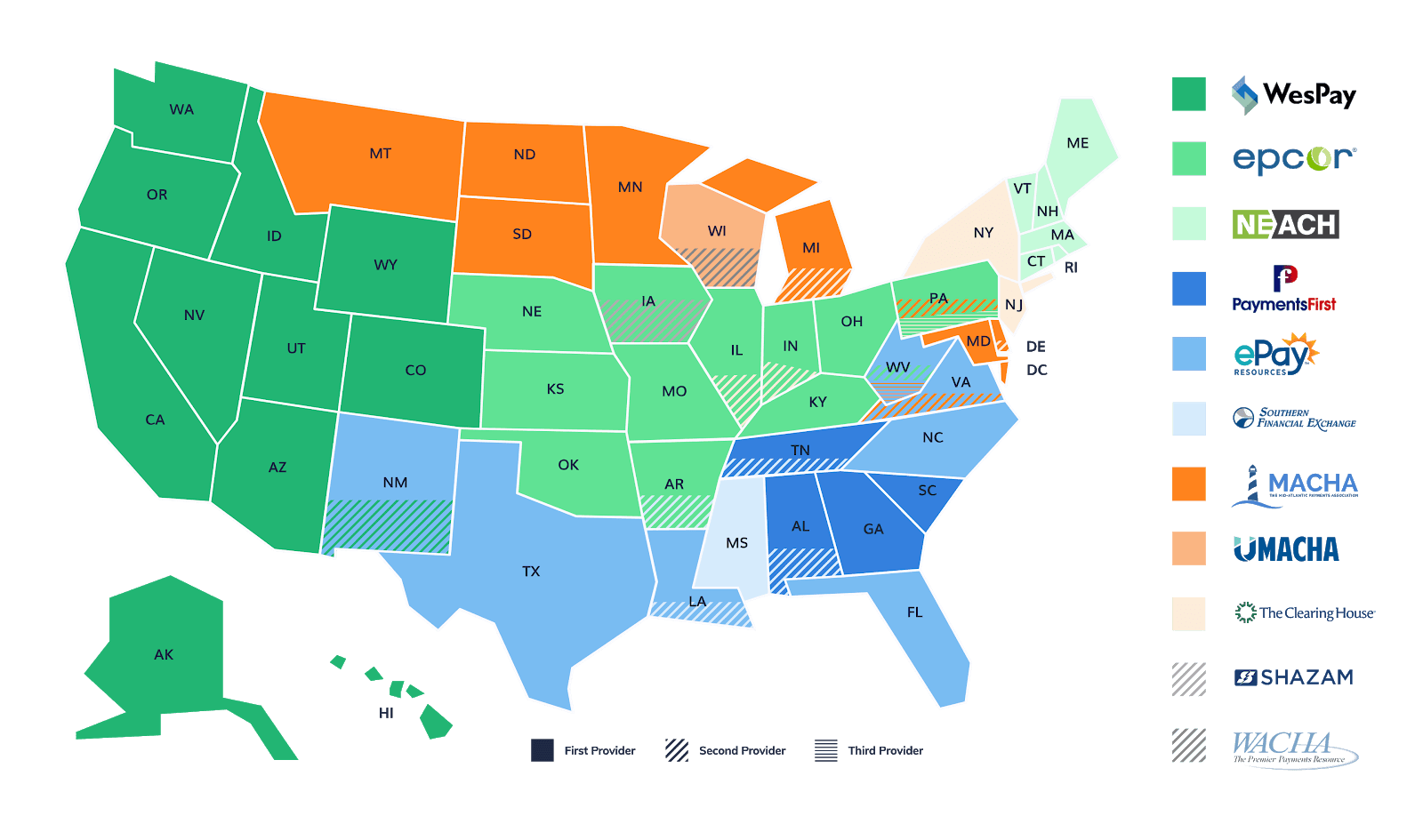Modern Treasury and Paxos Make It Easier for Businesses to Move Money with Stablecoins.Learn more →
A Complete Primer to ACH: Understanding The Four Key Players
In the United States, moving money is big business. The ACH Network moves $51 trillion dollars in 23 billion electronic financial transactions per year. That’s almost 70 payments per person.

In the United States, moving money is big business. The ACH Network moves $51 trillion dollars in 23 billion electronic financial transactions per year. That’s almost 70 payments per person.
ACH payments are used to electronically move money between two parties. It’s a method used in many types of payment flows, from payroll deposits, to businesses paying vendors, to disbursements to contractors such as Lyft drivers.
When a company wants to move money, they tell their bank (the originating depository financial institution, or ODFI) to deposit or debit money from their counterparty’s account (the receiving depository financial institution, or RDFI). In the Lyft example, after a driver completes shifts, Lyft initiates a payment. A few days later, money shows up in the driver’s bank account.
There are four major players involved in making this type of payment happen. Here’s a who’s who of ACH payments.
#1 The Federal Reserve Bank
The Federal Reserve operates as fiscal agent and banker to the US government. One core part of its responsibilities is processing ACH Payments on behalf of the government, such as social security and government payroll.
The Federal Reserve also operates one of two ACH systems, called FedACH. Their systems process approximately 75% of ACH payments in the US. In this operational role, Federal Reserve Banks receive ACH payment files from ODFIs. They then sort the payments, deliver them to RDFIs, and settle by crediting and debiting the ODFI and RDFI settlement accounts.
The Federal Reserve manages ACH according to Operating Circular 4, which incorporates the operation rules of NACHA (see below). There are 11 operating circulars. (Also: what a superb name.)
Similar to FedACH, the Federal Reserve recently announced it will launch a real-time payments service called FedNow.
#2 The Clearing House
The Clearing House (TCH) owns the Electronic Payments Network (EPN), the other ACH operator. It’s privately owned by 25 large international banks and manages $2 trillion in daily payments. That’s about 25% of all payments volume and approximately half of commercial ACH and wire volume in the US. TCH also manages a membership organization called Payment Authority, which has 1000 financial institutions as members.
The Clearing House was originally the New York Clearing House Association and dates back to 1853. Settlements used to happen in person, each morning, at the Clearing House building. [1]
Together, the Federal Reserve Banks and EPN process interoperator ACH Payments. Although final settlement is managed by the Reserve Banks.
The Clearing House launched Real Time Payments in 2017. TCH also provides thought leadership, policy support, research, and education to industry members and the public.
#3 NACHA
NACHA is the trustee of the ACH Network. There are two central clearing facilities that comprise the ACH Network: The Federal Reserve and The Clearing House. NACHA guidelines apply to both parties. NACHA was previously known as the National Automated Clearinghouse Association but now goes by “NACHA.”
The core function of NACHA is to write, maintain, and enforce the rules for the ACH Network. It does this with input from operators, regulators, member institutions, and network users. Within these rules are directions on how to define transaction types, product types, and file specifications. The NACHA operating rules and operating guidelines together are over 700 pages long.
NACHA represents over 10,000 financial institutions. Large financial players like Wells Fargo, JP Morgan Chase, and Bank of America are direct members. NACHA also partners with 11 regional payments associations, which serve as a connection to NACHA for smaller financial institutions. NACHA was founded in 1974 when a handful of regional associations came together to form it.

Map of regional payments associations.
Along with the Federal Reserve, NACHA partnered with the US Air Force the same year to start a direct deposit payroll program. This was the first direct deposit payroll program in the country.
#4 Software Vendors & Service Providers
ACH software and support is provided by many types of companies. Here are three examples of software and service providers in ACH:
- Banks provide ACH transmission capabilities to their merchant customers
- Enterprise Resource Planning companies help businesses pay vendors
- Payment operations software, such as Modern Treasury, help companies send and reconcile payments
Conclusion
“Network” is certainly the correct word to describe how money moves via ACH. There are many paths and processes a transfer must go through, and important key players along the way, before it is successful.
If you want to go deeper, we learned a lot from Payments Systems in the U.S. - Third Edition: A Guide for the Payments Professional. For more money moving info and solutions, reach out to us at Modern Treasury. [2]
See the video at https://www.theclearinghouse.org/about/history
Payments Systems in the U.S. was written by the team at .
https://www.amazon.com/Payments-Systems-U-S-Carol-Benson/dp/098278970X








